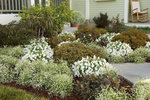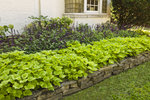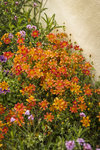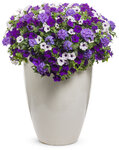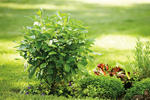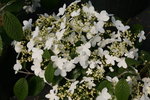All Articles
The search for the elusive true red flower is over! We know the color red is widely interpreted to mean everything from dark pink to wine purple when it comes to plants. As you plan your spring and summer containers or design your landscape, use this list as a guide to finding the perfect shade of red.
Learn about ways to use white in your garden, along with some plants you can use that have white flowers or foliage.
Clay soil is much maligned by gardeners and homeowners everywhere, and no wonder: it’s heavy, sticky, and difficult to work in. But the simple fact is that clay soil gets its bad rap because it’s hard on people - from a plant’s point of view, clay soil is usually not problematic at all. In fact, clay soils offer plants two major advantages over other soil types: they hold water well, minimizing drought stress, and are abundant in nutrients essential for plant growth. So, if you’ve been struggling to achieve your dream garden or landscape in clay soil, cheer up! Here are ten beautiful annuals that will thrive in clay.
Butterflies, hummingbirds, songbirds and bees add wonderful movement and great interest to our gardens. Attracting these winged friends to your garden is a fairly simple matter. Provide them with food, water and shelter and they are happy to come and stay a while. There is a wide palette of plants that will work for both your garden and pollinators.
Flowers may come and go, but fabulous foliage is hard at work every single day bringing beauty and color to shady garden spaces. Some plants with fun foliage act as a backdrop for flashier flowering plants while others steal the show all on their own. Here are twenty of our best shade-tolerant annuals, perennials and shrubs that offer season-long color in containers and landscapes.
You’ve seen gorgeous container recipes in pictures, but how do you get that look? It takes some time to learn how to design container combinations like a pro, but we have a few key tips that will prompt a successful start. Let’s take a look at five guidelines for choosing container companions.
Essential elements for plant nutrition include nitrogen, phosphorus, potassium, calcium, zinc, copper, molybdenum, magnesium, iron, sulfur, manganese and boron. They come from the soil and from applied fertilizer. Plants obtain carbon, hydrogen and oxygen from the air or through the soil.
Groundcover plants are a great answer to some of the most problematic garden and landscape conundrums. From uneven terrain, to places where you just can’t get other varieties to thrive, low growing groundcover shrubs are a great low-maintenance choice for small space gardening. These hard working plants can be used to dress up garden borders, as mass plantings in larger landscaping projects, and as natural tool to prevent erosion. Plus, because of their low growing characteristics, less weeding and mulching is required where these plants are sited.
Supporting pollinators ranks high among gardeners’ concerns and we agree—we all need to do what we can to provide a beneficial habitat, food and shelter for these critical creatures. Let’s take a look at ten perennials for bees and more you can grow to provide beauty and sustenance in your garden.
Over the years, we have surveyed gardeners to ask about their favorite flower colors. Pink is always high on the list of favorites. It’s a huge color category ranging from the lightest shades of baby pink to vivid fuchsia and every shade in between. Since it’s a top favorite, let’s take a look at some of our newest pink plants to warm up your garden.




